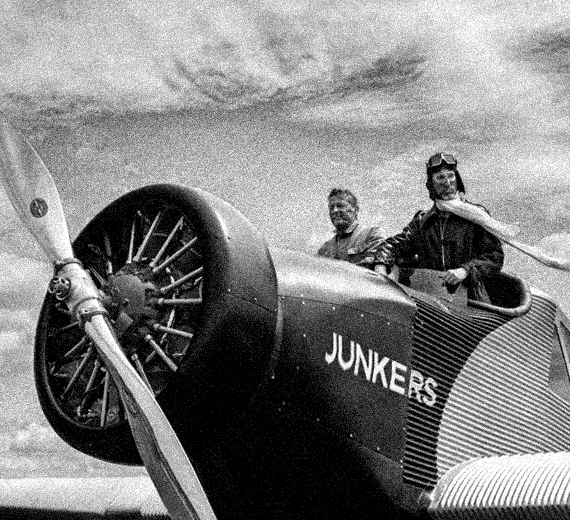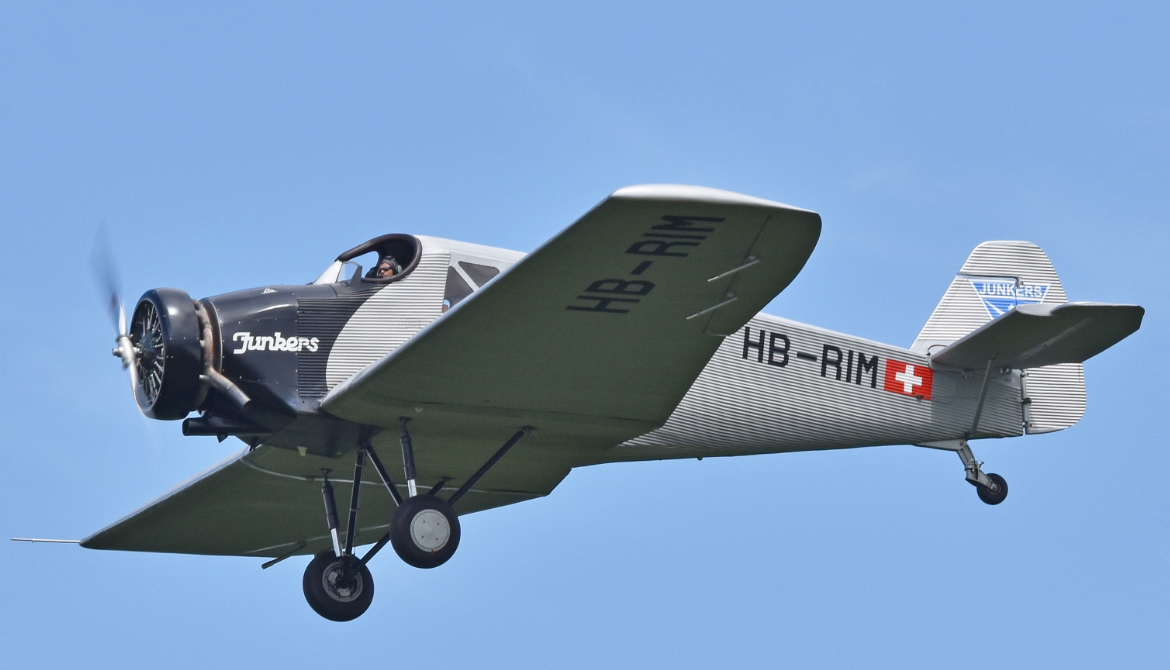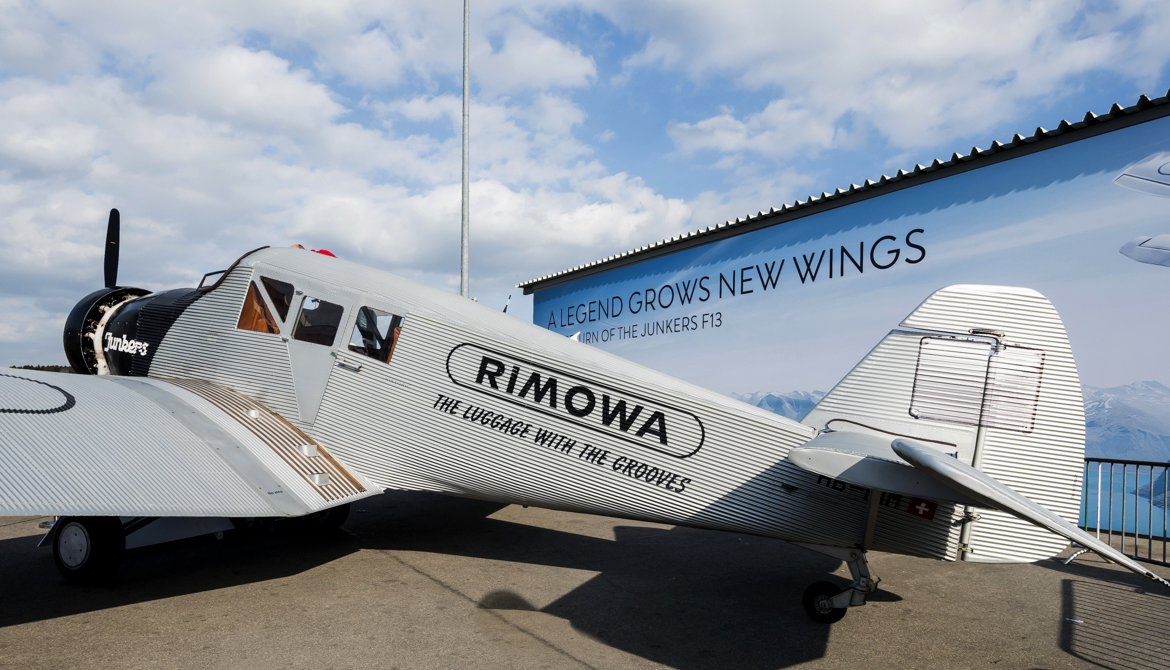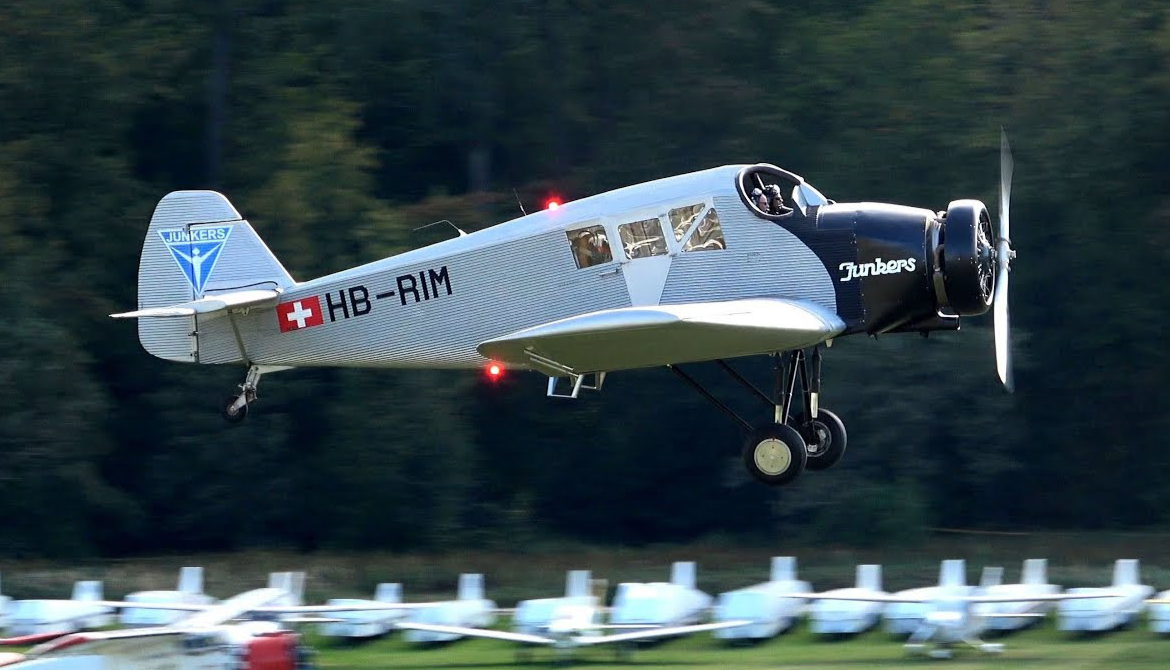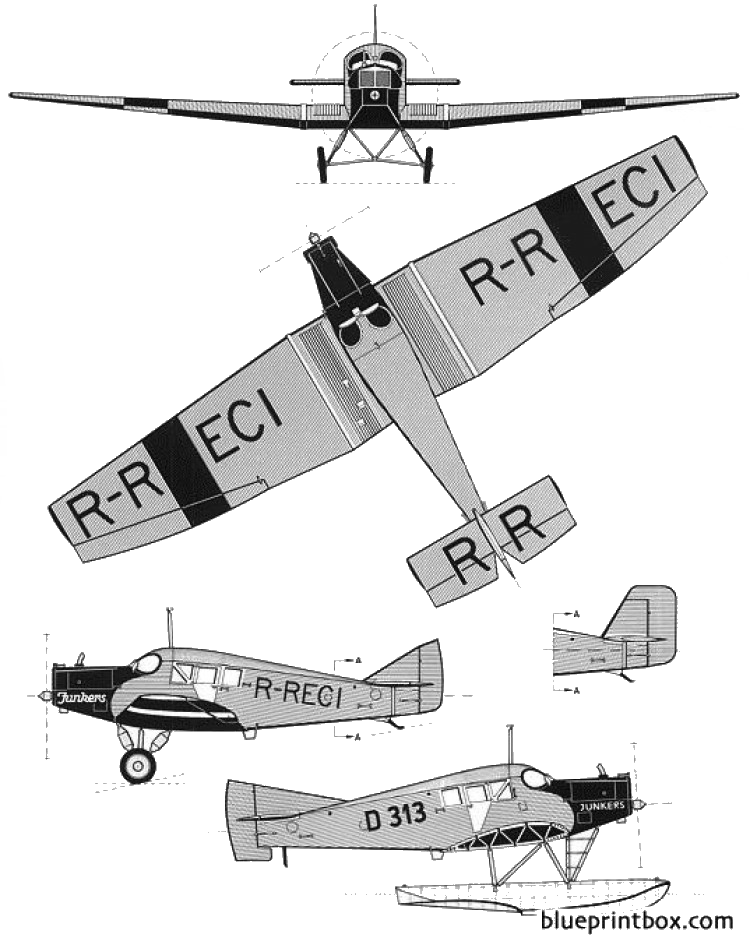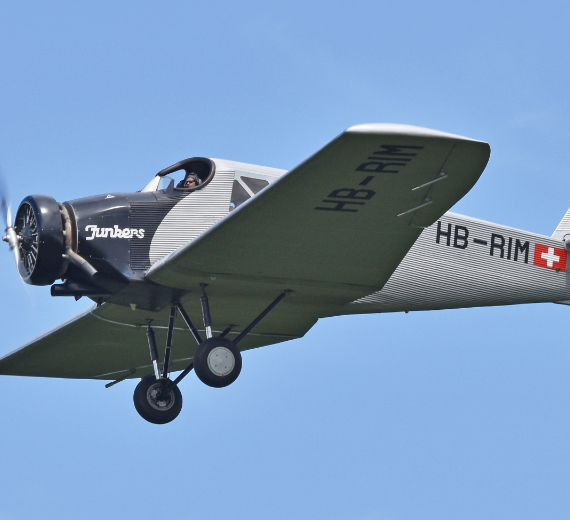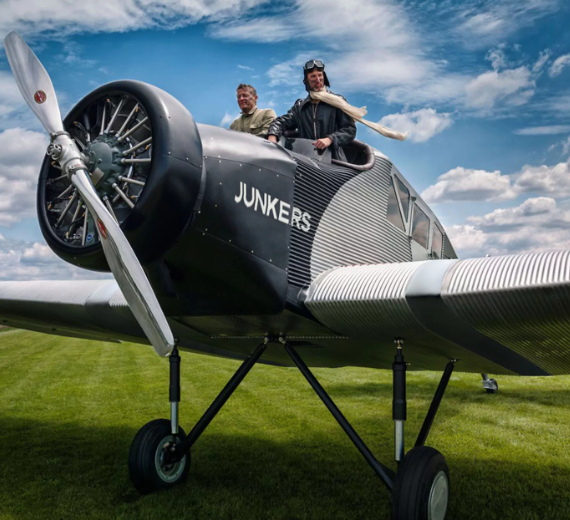.
History Junkers Flugzeug- und Motorenwerke AG JFM
Junkers F 13 was the world's first
all-metal transport aircraft

The Junkers F 13 was the world's first all-metal transport aircraft, developed in Germany at the end of World War I. It was an advanced cantilever-wing monoplane, with enclosed accommodation for four passengers. 322 planes of the type were manufactured, an exceptionally large number for a commercial airliner of the era, and were operated all over the globe. It was in production for thirteen years and in commercial service for more than thirty.
The Ju 52 was similar to the company's previous Junkers W 33, although larger. In 1930, German aeronautical engineer Ernst Zindel and his team designed the Ju 52 at the Junkers works at Dessau. According to aviation author J. Richard Smith, the Ju 52 directly drew upon the company's First World War-era Junkers J 1 - the world's first all-metal aeroplane..
Design
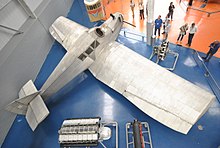
The F 13[2] was a very advanced aircraft when built, an aerodynamically clean all-metal low-wing cantilever (without external bracing) monoplane. Even later in the 1920s, it and other Junkers types were unusual as unbraced monoplanes in a biplane age, with only Fokker's designs of comparable modernity. It was the world's first all-metal passenger aircraft and Junkers' first commercial aircraft.
The designation letter F stood for Flugzeug, aircraft; it was the first Junkers aeroplane to use this system. Earlier Junkers notation labelled it J 13. Russian-built aircraft used the designation Ju 13.
Like all Junkers duralumin-structured designs, from the 1918 J 7 to the 1932 Ju 46, (some 35 models), it used an aluminium alloy (duralumin) structure entirely covered with Junkers' characteristic corrugated and stressed duralumin skin. Internally, the wing was built up on nine circular cross-section duralumin spars with transverse bracing. All control surfaces were horn balanced.
Operational history

Any manufacturer of civil aircraft immediately after World War I was faced with competition from the very large numbers of surplus warplanes that might be cheaply converted – for example, the DH.9C. German manufacturers had further problems with the restrictions imposed by the Inter-Allied Aeronautical Commission of Control, which banned the production of warplanes and of any aircraft in the period of 1921–2. Junkers[5] picked up orders abroad in 1919 in Austria, Poland and the USA and, in the following years with SCADTA (Colombia) and the United States Post Office Department. John Larsen Aircraft in the USA purchased a production licence, their machines being designated JL-6. In 1922 there were sales in England, France Italy and Japan.
0
KmCeiling
0
KmCombat RANGE
0
Km/hAircraft Speed
0
Max Crew
Photo Gallery
Junkers Flugzeug- und Motorenwerke AG JFM
Junkers F 13 was the world's first
all-metal transport aircraft


Junkers Flugzeug- und Motorenwerke AG JFM
Junkers F 13 was the world's first
all-metal transport aircraft
General Info
-
-
- Crew: two
- Capacity: four passengers or 689 kg (1,519 lb) payload
- Length: 9.59 m (31 ft 6 in)
-
-
- F 13fe: 10.50 m (34 ft)
-
- Wingspan: 14.8 m (48 ft 7 in)
-
-
- F 13fe: 17.75 m (58 ft)
-
- Height: 3.50 m (11 ft 6 in)
-
-
- F 13fe: 3.60 m (12 ft)
-
- Wing area: 34.50 m2 (371.4 sq ft)
-
-
- F 13fe: 44 m2 (474 sq ft)
-
-
Powerplant
-
-
- Empty weight: 951 kg (2,097 lb)
-
-
- F 13fe: 1,480 kg
-
- Max takeoff weight: 1,640 kg
-
-
- F 13fe: 2,318 kg
-
- Powerplant: 1 × Mercedes D.IIIa 6-cyl.water-cooled in-line piston engine, 118 kW (158 hp)
-
-
- F 13fe: 1 x 228 kW (306 hp) Junkers L5 6-cyl. water-cooled in-line piston engine
-
-
Performance
- Maximum speed: 173 km/h
-
-
- F 13fe: 198 km/h (123 mph)
-
- Cruise speed: 160 km/h (99 mph,
-
-
- F 13fe: 170 km/h (106 mph)
-
- Range: 1,400 km (870 mi, 760 nmi)
- Service ceiling: 5,000 m (16,000 ft)
-
-
- F 13fe: 5,090 m (16,699 ft)
-
.
Links to Youtube & Others
A German-Swiss project to build a reconstruction of the F 13 was launched in 2009; the first flight was in September 2016. The reconstruction is equipped with radio and a transponder, and uses a 1930s Pratt & Whitney R-985 Wasp Junior engine, but is otherwise as close as possible to the original. Additional reconstructions are to be sold for $2.5 million apiece
Junkers F 13 first
all-metal transport aircraft
Junkers Flugzeugwerke (SD303) has resurrected the Junkers F 13 as an all-new airplane to honor Hugo Junkers’ achievements.
Youtube Link
Modern replica first flown 15 September 2016.[9] With the approval of the Junkers heirs, Rimowa Junkers was renamed.

